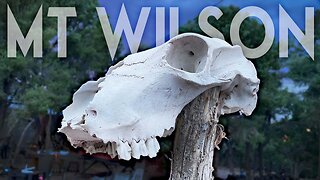Cute little kitten .
Felines are carnivores and have adapted to animal-based diets and low carbohydrate inclusion. Kittens are categorized in a growth life stage, and have high energy and protein requirements.[23] When feeding a kitten, it is often recommended to use highly digestible ingredients and various components to aid in development in order to produce a healthy adult.[24] In North America, diets certified by the Association of American Feed Control Officials (AAFCO) are accepted as adequate nutrition, thus kitten diets should be AAFCO approved to ensure full supplementation.[25] Key components of the diet are high fat content to meet caloric requirements of growth, high protein to meet requirements for muscle growth as well as supplementation of certain nutrients such as docosahexaenoic acid to benefit the development of the brain and optimization of cognition.[26]
Pre-weaning nutrition
Establishing immunity
Part of the kitten's immune system is the mucosal immune system, which is within the gastrointestinal tract. The mucosal immune system is largely responsible for coordinating proper immune responses by tolerating innocuous antigens and attacking foreign pathogens.[27] In order to optimize kitten health and increase chances of survival, it is important to optimize the link between the gut-associated lymphoid tissue and the microbiota of the gastrointestinal tract. Lasting health and longevity can be accomplished partly through proper nutrition[28] and establishing a healthy gut from birth through utilizing colostrum.[29]
A litter of kittens suckling their mother
Within the first 2 days after birth, kittens acquire passive immunity from their mother's milk.[30] Milk within the first few days of parturition is called colostrum, and contains high concentrations of immunoglobulins.[30] These include immunoglobulin A and immunoglobulin G which cross the intestinal barrier of the neonate.[29] The immunoglobulins and growth factors found in the colostrum begin to establish and strengthen the weak immune system of the offspring.[31] Kittens are able to chew solid food around 5–6 weeks after birth, and it is recommended that 30% of their diet should consist of solid food at this time.[32] The kitten remains on the mother's milk until around eight weeks of age when weaning is complete and a diet of solid food is the primary food source.[23]
Post-weaning nutrition
Fat
Until approximately one year of age, the kitten is undergoing a growth phase where energy requirements are up to 2.5 times higher than maintenance.[33] Pet nutritionists often suggest that a commercial cat food designed specifically for kittens should be offered beginning at 4 weeks of age.[28] Fat has a higher caloric value than carbohydrates and protein, supplying 9 kcal/g.[34] The growing kitten requires arachidonic and linoleic acid which can be provided in omega-3 fatty acids.[23] Docosahexaenoic acid (DHA) is another vital nutrient that can be supplied through omega 3 fatty acid. Addition of DHA to the diet benefits the cognition, brain and visual development of kittens.[28]
Protein
Cats are natural carnivores and require high amounts of protein in the diet. Kittens are undergoing growth and require high amounts of protein to provide essential amino acids that enable the growth of tissues and muscles.[30] It is recommended that kittens consume a diet containing approximately 30% protein, on a dry matter basis, for proper growth.[35]
Taurine is an essential amino acid found only in animal tissue; the mother cat cannot produce enough of it for her kittens.[36] As it is an indispensable amino acid, it must be provided exogenously through the diet at 10mg per kg of bodyweight, each day.[37] Kittens deprived of taurine can experience poor growth[36] and can result in retinal degeneration in cats.[38]
Carbohydrates
Felines are natural carnivores and do not intentionally consume large quantities of carbohydrates. The domestic cat's liver has adapted to the lack of carbohydrates in the diet by using amino acids to produce glucose to fuel the brain and other tissues.[39] Studies have shown that carbohydrate digestion in young kittens is much less effective than that of a mature feline with a developed gastrointestinal tract.[40] Highly digestible carbohydrates can be found in commercial kitten food as a source of additional energy as well as a source of fiber to stimulate the immature gut tissue. Soluble fibre such as beet pulp is a common ingredient used as a fibrous stool hardener and has been proven to strengthen intestinal muscles and to thicken the gut mucosal layer to prevent diarrhea.[41]
Diet composition
Amino acids
The lack of readily available glucose from the limited carbohydrates in the diet has resulted to the adaptation of the liver to produce glucose from the breakdown components of protein—amino acids. The enzymes that breakdown amino acids are constantly active in cats. Thus, cats need a constant source of protein in their diet.[24] Kittens require an increased amount of protein to supply readily available amino acids for daily maintenance and for building new body components because they are constantly growing.[24] There are many required amino acids for kittens. Histidine is required at no greater than 30% in kitten diets, since consuming histidine-free diets causes weight loss.[25] Tryptophan is required at 0.15%, seeing as it maximizes performance at this level.[25] Kittens also need the following amino acids supplemented in their diet: arginine to avoid an excess of ammonia in the blood, otherwise known as hyperammonemia, isoleucine, leucine, valine, lysine, methionine as a sulfur-containing amino acid, asparagine for maximal growth in the early post-weaning kitten, threonine and taurine to prevent central retinal degeneration.[25]
Vitamins
Fat-soluble vitamins
Vitamin A is required in kitten diets because cats cannot convert carotenes to retinol in the intestinal mucosa because they lack the necessary enzyme; this vitamin must be supplemented in the diet.[24][42] Vitamin E is another required vitamin in kitten diets; deficiency leads to steatitis, causing the depot fat to become firm and yellow-orange in colour, which is painful and leads to death.[42] Also, vitamin D is an essential vitamin because cats cannot convert it from precursors in the skin.[24]
Water-soluble vitamins
Cats can synthesize niacin, but their breakdown exceeds the rate that it can be synthesized and thus, have a higher need for it, which can be fulfilled through an animal-based diet.[24] Pyridoxine (vitamin B6) is required in increased amounts because it is needed to produce amino acids.[24] Vitamin B12 is an AAFCO-recommended vitamin that is essential in the metabolism of carbohydrates and protein and maintains a healthy nervous system, healthy mucous membranes, healthy muscle and heart function, and, in general, promotes normal growth and development.[42] Choline is also a AAFCO recommended ingredient for kittens, which is important for neurotransmission in the brain and as a component of membrane phospholipids.[24] Biotin is another AAFCO-recommended vitamin to support thyroid and adrenal glands and the reproductive and nervous systems.[24] Kittens also require riboflavin (vitamin B2) for heart health, pantothenic acid (vitamin B5), and folacin.[42]
Metabolism aids
Since kitten diets are very high in calories, ingredients must be implemented to ensure adequate digestion and utilization of these calories. Choline chloride is an ingredient that maintains fat metabolism.[42] Biotin and niacin are also active in the metabolism of fats, carbs and protein.[42] Riboflavin is also necessary for the digestion of fats and carbohydrates.[42] These are the main metabolism aids incorporated into kitten diets to ensure nutrient usage is maximized.
Kitten playing in a Tokyo pet shop
Growth and development
A combination of required nutrients is used to satisfy the overall growth and development of the kitten body; there are many ingredients that kittens do not require, but are included in diet formulation to encourage healthy growth and development. These ingredients include: dried egg as a source of high quality protein and fatty acids, flaxseed, which is rich in omega-3 fatty acid and aids in digestion, calcium carbonate as a source of calcium, and calcium pantothenate (vitamin B5) that acts as a coenzyme in the conversion of amino acids and is important for healthy skin.[42]
Immunity boosters
Antioxidants help support the development of a healthy immune system through inhibiting the oxidation of other molecules, which are essential for a growing kitten.[24] Antioxidants can be derived from ingredients, such as: carrots, sweet potatoes, spinach, vitamin E and vitamin E supplement, and zinc proteinate.
-
 LIVE
LIVE
SonnyFaz
4 hours agoDr. Shiva x Sonny IRL
1,190 watching -
 4:28:03
4:28:03
LumpyPotatoX2
10 hours agoSub-Sunday on Rumble - #RumbleTakeover
50.7K4 -
 26:04
26:04
iamLucid
1 day agoVideo Game Piracy is Unstoppable
78.7K47 -
 16:31
16:31
GeekyNerdyTechy
1 day agoZHIYUN Fiveray M20C Combo Light Review & Tutorial
97.9K9 -
 8:29
8:29
ParisDemers
1 day agoThe Kratos/God Of War Workout Program (His Real-Life Training)
86.7K6 -
 16:14
16:14
CarlCrusher
1 day agoSkinwalker's Evil Twin - Beyond Skinwalker Ranch Behind the Scenes Season 1 ep 2
89K11 -
 58:35
58:35
Crime Circus
1 day agoMackenzie Shirilla KlDNAPPED!! True Crime Documentary!
94.5K27 -
 8:03
8:03
Bearing
1 day agoE-Safety Karen INVENTS Elon Musk HARASSMENT While LEAKING Private Details!
100K112 -
 17:16
17:16
Clownfish TV
1 day agoMedia Melting Down Over Mainstream Media Meltdown...
124K87 -
 1:11
1:11
Gamazda
1 day agoFlight of the Bumblebee - Rimsky-Korsakov
115K119